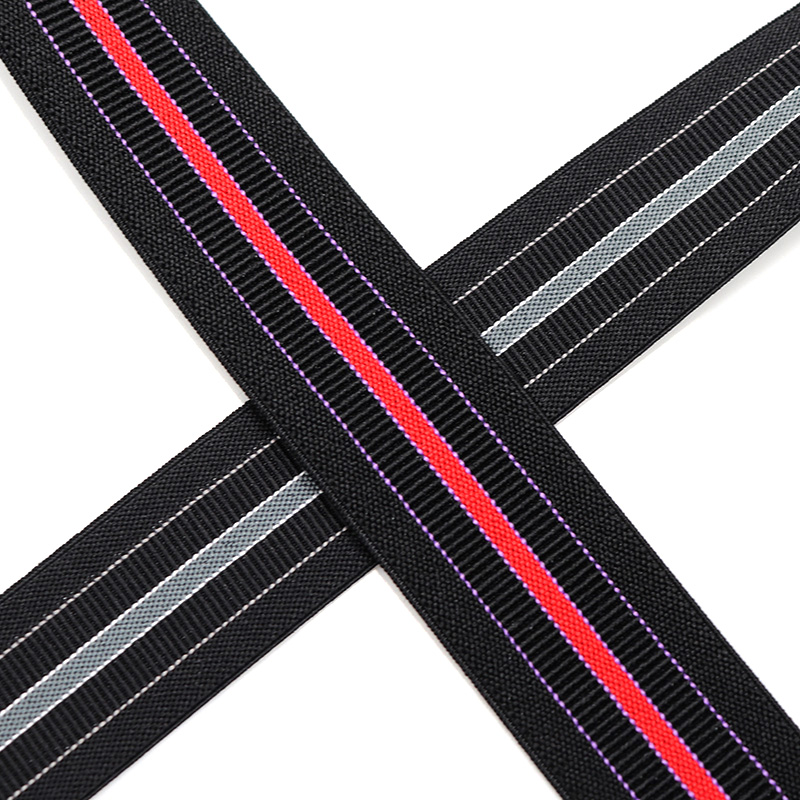Industry
 By Admin
By Admin
How The Right Elastic Can Enhance Garment Fit And Function
When it comes to apparel design, the choice of materials often makes the difference between a piece that looks good on a hanger and one that feels comfortable in everyday wear. Elastic components are among the quiet achievers of garment construction, providing the stretch, recovery, and flexibility that allow clothing to move with the body. From sportswear to lingerie, the right type of elastic can greatly influence how a garment fits and functions over time.
One area where elastic plays a surprisingly important role is in home textiles. For example, elastic bedding straps have become a practical solution for keeping fitted sheets securely in place. While not directly part of clothing, the principle is the same—maintaining tension without restricting comfort. Designers and manufacturers understand that garments often face similar challenges, where movement and shifting can affect fit. By studying how elastic bedding straps hold fabric in position, apparel makers can apply similar ideas to waistbands, cuffs, and hems to prevent garments from twisting or bunching during wear.

In the lingerie industry, the elastic bra band is one of the more critical structural elements. It provides the main support for the bust, far more than the straps on the shoulders. A well-chosen elastic bra band should balance stretch with firmness, ensuring that it adapts to the wearer's body while maintaining its shape after repeated use. This requires careful attention to width, tension, and fiber content. Inferior choices can advance to discomfort, early loss of elasticity, or poor garment stability, all of which affect customer satisfaction.
Similarly, elastic fabric straps are versatile components that appear in a wide range of apparel, from casual dresses to athletic gear. Their adaptability allows designers to create secure closures, adjustable features, or decorative accents without sacrificing comfort. In sportswear, for example, elastic fabric straps can be used to keep sleeves in place or to provide adjustable tension in hooded jackets. The ability to fine-tune fit with these straps makes them a valuable design tool.
When choosing the right elastic for any garment, understanding stretch ratio and recovery is essential. Too much stretch can cause a garment to lose shape, while too little can limit comfort. This is why elastic bedding straps are often made with a specific balance—they need to hold tension for long periods without overstretching. The same concept applies to an elastic bra band that must endure constant tension during daily wear. Similarly, elastic fabric straps must strike a balance between flexibility and firmness to remain functional and comfortable over time.
Durability is another important consideration. Exposure to heat, sweat, detergents, and repeated stretching can gradually break down fibers. For example, a well-made elastic bra band should resist curling or losing elasticity after many washes. The same care applies to elastic bedding straps, which must retain their grip even after frequent laundering. In the case of elastic fabric straps, finishing techniques such as heat-sealing edges or using anti-fray coatings can help prolong their lifespan.
Aesthetic factors also influence the selection of elastic materials. Jacquard patterns, color-dyed elastics, or textured surfaces can add style to functional components. In outerwear, elastic fabric straps can double as both a fastening method and a design detail, while in lingerie, a decorative elastic bra band can be part of the garment's visual appeal. Even in home goods, color-matched elastic bedding straps can enhance the coordinated look of a bedroom set.
From a manufacturing perspective, consistency in width, elasticity, and tension is vital. Uneven tension can create discomfort, while inconsistent widths can make sewing difficult. This is especially true for elastic bedding straps, which must fit snugly without distorting the sheet corners, and for elastic bra bands, where uneven tension can advance to poor support. For elastic fabric straps, uniformity ensures that each piece behaves predictably when sewn into a garment.
Ultimately, the right elastic choice is about more than just stretch—it's about integrating flexibility, durability, and comfort into the overall garment design. Whether it's a supportive elastic bra band, a practical set of elastic bedding straps, or a versatile pair of elastic fabric straps, the quality and suitability of the elastic will directly influence how the product looks, feels, and functions in real life.
By paying close attention to these often overlooked components, designers can ensure that their garments maintain a consistent fit and provide comfort for as long as possible. After all, in both apparel and home textiles, the quiet strength of elastic materials works behind the scenes to keep everything in place, move with the wearer, and stand the test of time.



 English
English Español
Español عربى
عربى Tiếng Việt
Tiếng Việt

